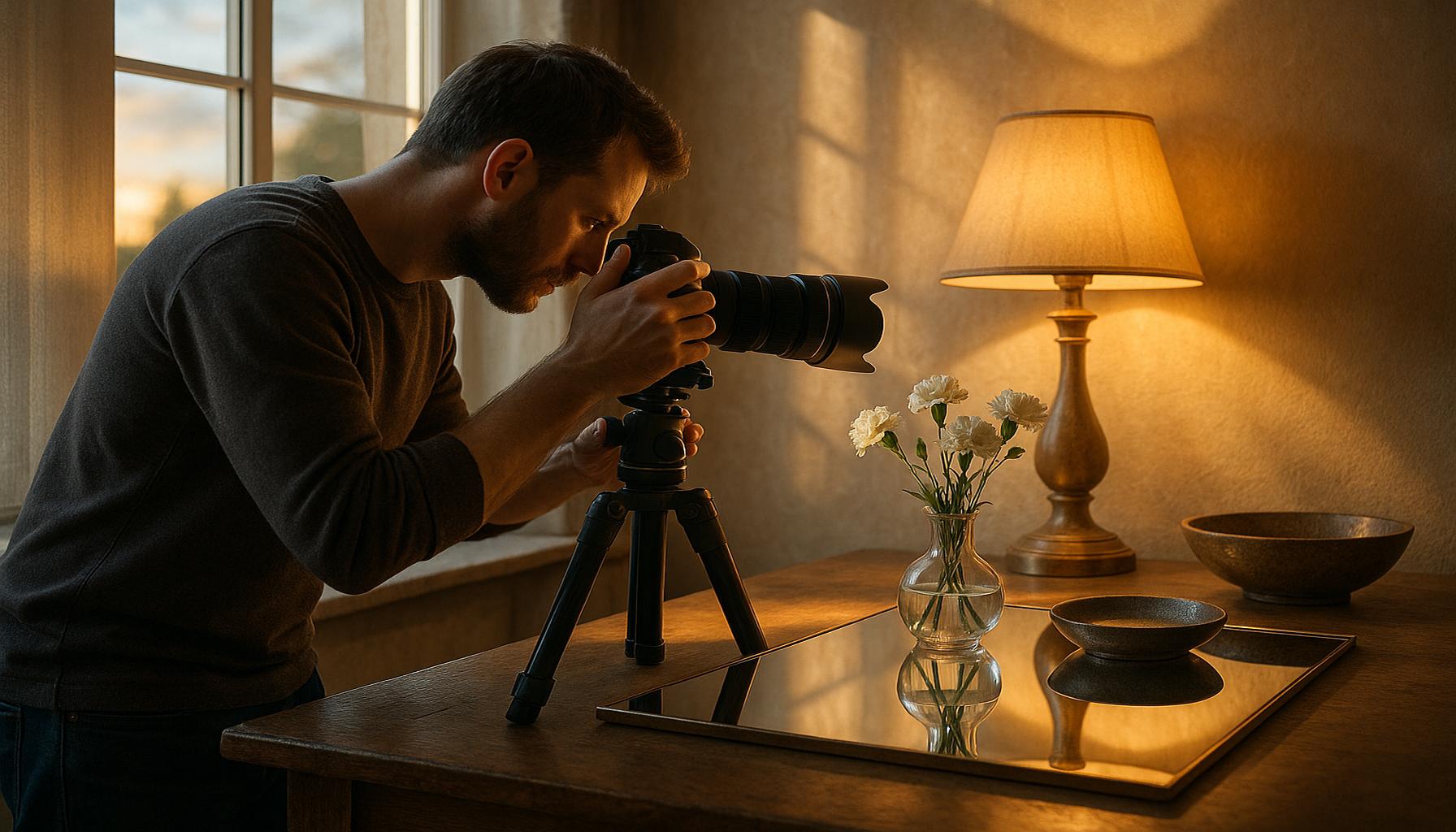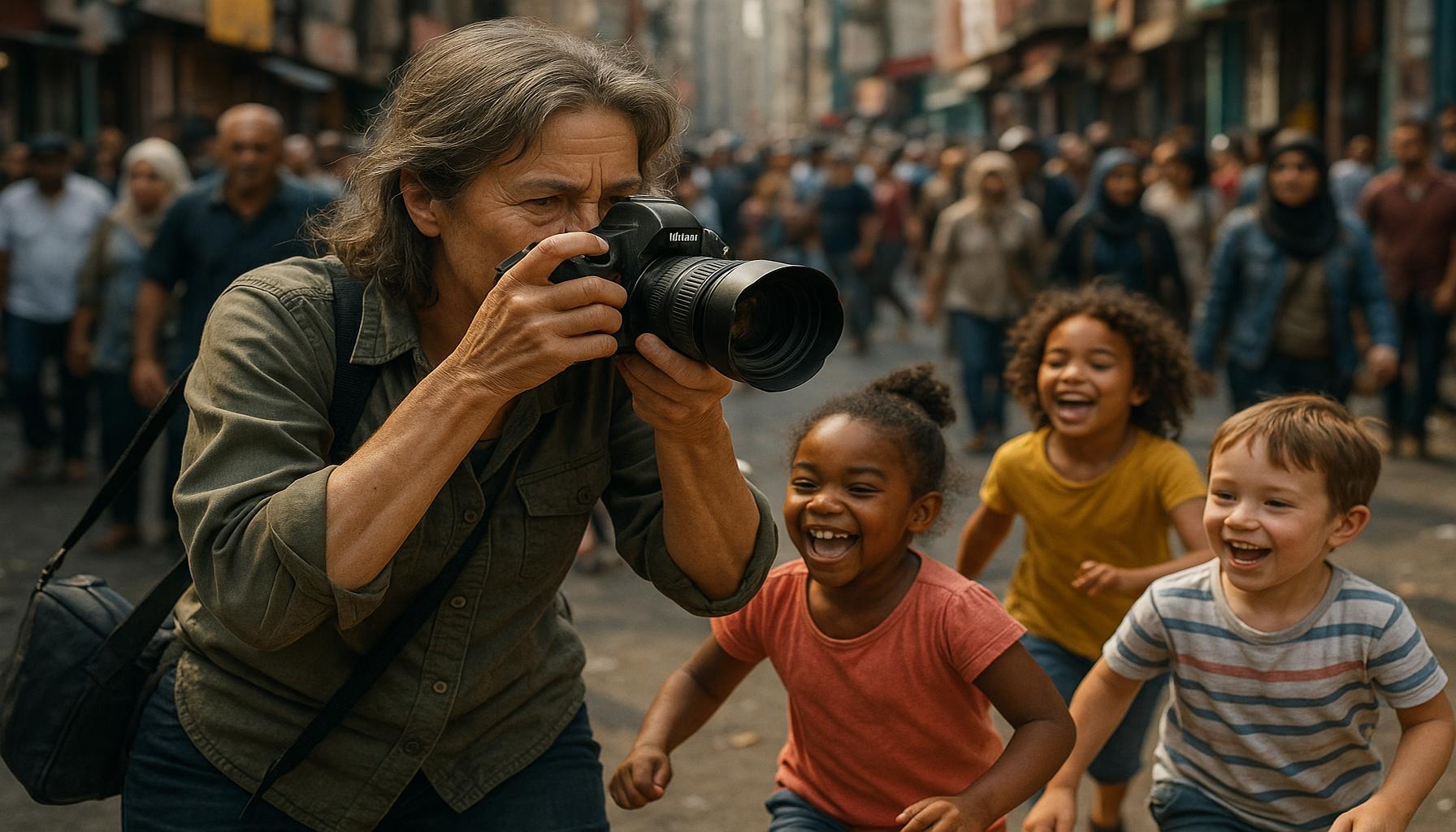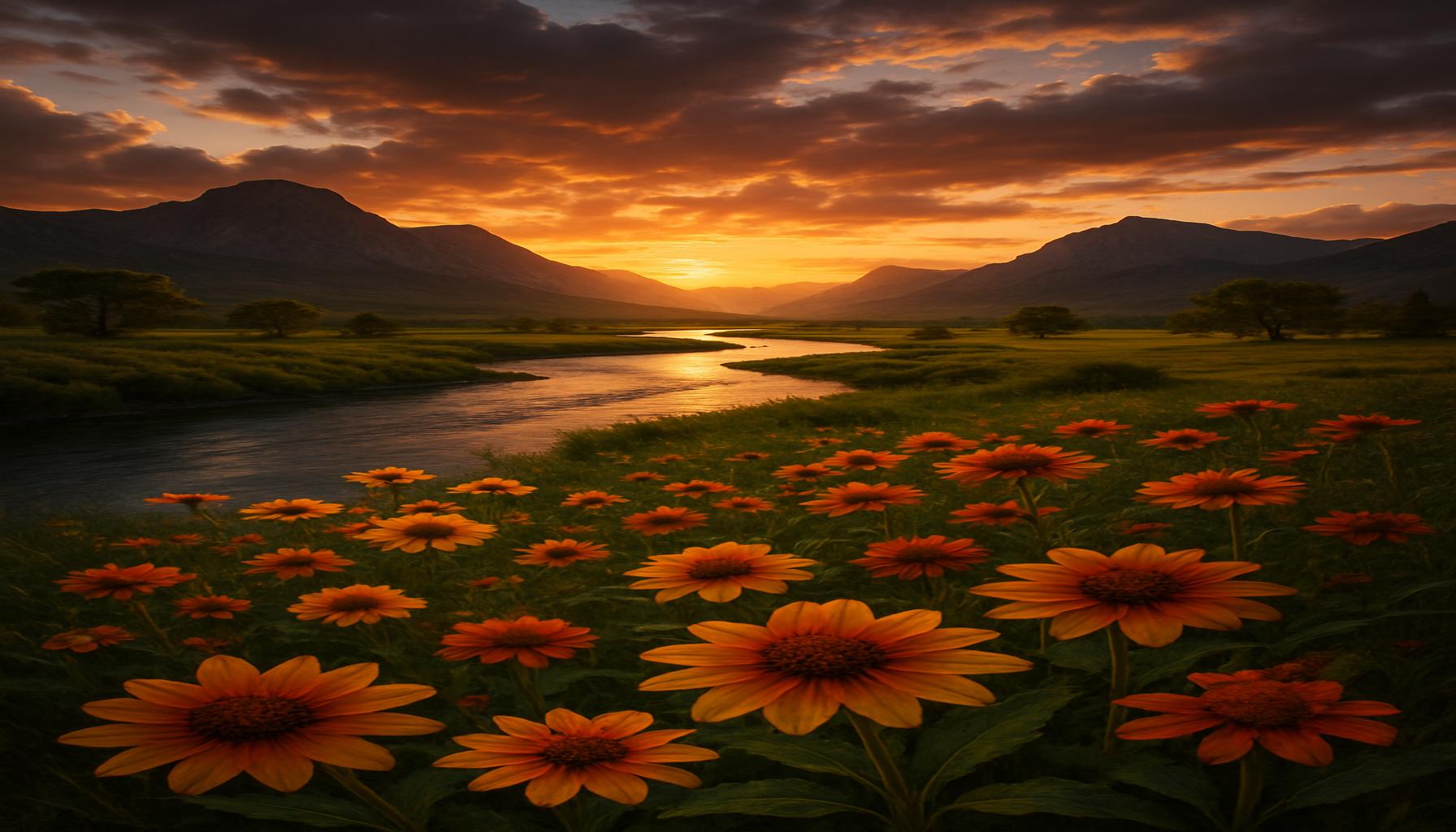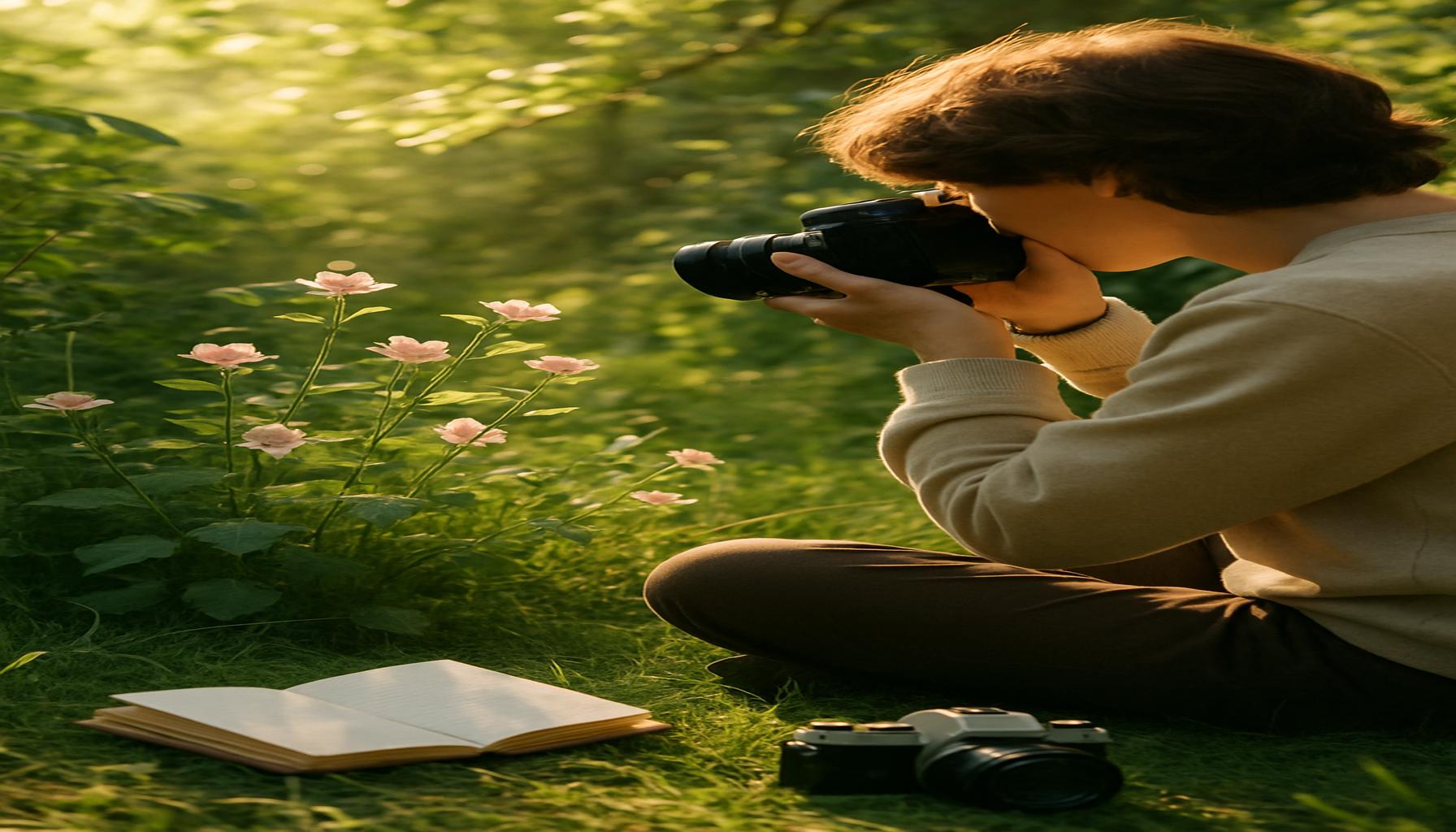The Importance of Light in Photography: Techniques to Utilize Different Light Sources

The Transformative Nature of Light in Photography
Light acts as the backbone of photography, shaping our visual experience and influencing how we perceive images. Rather than simply serving as a means to illuminate a scene, light brings depth and emotion, allowing photographers to tell compelling stories through their work. Understanding the nuances of different light sources is essential for anyone looking to enhance their photographic skills and express their creativity.
Natural Light: The Beauty of the Outdoors
Natural light is often revered for its ability to create lively and dynamic scenes. The quality of sunlight changes throughout the day, with the most magical moments occurring during the ‘golden hour’, which is just after sunrise and before sunset. During this time, the sun is low on the horizon, casting a warm, golden hue that softens shadows and enhances colors. Photographers often flock to outdoor locations during these hours to capture breathtaking landscapes or portrait shots that convey warmth and intimacy.
For example, consider a portrait taken in the golden hour: the subject’s skin may have a warm glow, and the background can become a dreamy blur of color that adds depth to the image. In contrast, harsh midday sunlight can create strong shadows and overly bright highlights, making it challenging for photographers to create well-exposed images without the use of reflectors or diffusers.
Artificial Light: Control and Creativity
Artificial light offers photographers a different set of tools to enhance their compositions. Techniques such as using flash, studio lights, or continuous lighting allow for precise control over shadows and highlights. For instance, in a studio setting, a photographer can manipulate the direction and intensity of light to achieve desired effects, such as dramatic shadows that add intrigue to a product shot or a clean, soft glow for beauty portraits.
Moreover, experimenting with colored gels on lights can introduce striking tonal variations, creating a unique atmosphere. This is particularly popular in fashion and commercial photography, where brands may seek distinct visual styles to stand out in the crowded marketplace.

Ambient Light: Embracing the Existing Conditions
Ambient light refers to the natural light present in a scene without any modification. Photographers often embrace these existing light conditions to convey a specific mood or atmosphere. For instance, shooting in the soft, diffused light of an overcast day can result in gentle, even exposure that’s perfect for capturing subtle colors in nature or soft textures in architecture.
In contrast, low-light situations—such as capturing cityscapes at night—can evoke a sense of mystery and wonder. Utilizing long exposures allows photographers to capture the trails left by moving lights, creating stunning images that communicate the vibrancy of urban life.
By understanding how to work with different light sources—whether natural or artificial—photographers can significantly enhance their artistic vision. Light is not just an element of exposure; rather, it is a powerful storytelling tool that helps convey emotion, atmosphere, and depth. Through practice and experimentation with various lighting techniques, every photographer can learn to harness the transformative power of light. This exploration leads not only to technical advancement but also to a richer, more expressive photographic style.
DISCOVER MORE: Click here to learn how photography can enhance your emotional well-being
Exploring the Spectrum of Light in Photography
In the world of photography, light is not merely a tool; it is the very essence that breathes life into an image. The way light interacts with subjects dictates not only the exposure but also the emotional resonance of the photograph. By mastering various light sources, photographers can skillfully manipulate these elements to improve their compositions and communicate their artistic visions effectively.
Understanding the Light Spectrum
Before diving into practical techniques, it’s crucial to grasp the broad spectrum of light available to photographers. Light can be divided into three primary categories based on its source: natural light, artificial light, and mixed lighting. Each type has its own characteristics that can impact the final photograph. Let’s look closer at these categories and their applications:
- Natural Light: Sun-driven illumination provides a range of tones and colors that change with the time of day and weather conditions.
- Artificial Light: Man-made sources such as flash, LED panels, and studio lights allow for greater control over the lighting setup in various environments.
- Mixed Lighting: Combining different sources of light can create complex and interesting effects, though it requires an understanding of color balance to ensure harmony.
Maximizing the Impact of Natural Light
Natural light, often regarded as the most favorable source for photographers, carries unique qualities that can significantly enhance any shot. Different times of the day provide varying intensities and colors of light. For example, during the blue hour—just before sunrise or after sunset—the sky takes on deep blues and purples, lending a dramatic quality to any image. This transitional light can beautifully capture landscapes, cityscapes, or portraits that evoke serenity and depth.
Furthermore, photographers can utilize the direction of sunlight to create contrast and dimensionality. A direct light source can cast striking shadows, while backlighting can create silhouettes, adding intrigue and depth to scenes. Consider this technique in portrait photography, where placing your subject against the light can result in an ethereal glow outlining their features, turning an ordinary portrait into a captivating work of art.
Harnessing the Power of Artificial Light
Artificial lighting serves as a vital ally for photographers, particularly in controlled environments such as studios or during low-light conditions. Utilizing flashes, softboxes, or ring lights, photographers can place emphasis on their subjects and shape the narrative within their images. One popular technique is the Rembrandt lighting, known for producing a characteristic triangular highlight on the cheek of the subject, resulting in a classic, dramatic portrait style.
Additionally, the ability to modify artificial light with accessories such as diffusers and reflectors allows photographers to manipulate the quality of light, creating softer shadows or enhancing highlights. This flexibility is invaluable for product photography, where achieving an appealing aesthetic can be the difference between catching a customer’s eye and being overlooked.
By understanding the diverse properties of light and utilizing available sources effectively, photographers can significantly elevate their imagery—enhancing visual storytelling, emotion, and engagement. The journey of mastering light opens a multitude of creative avenues, inviting photographers to explore new techniques and push the boundaries of their craft.
The Impact of Natural Light
Natural light is often considered the best source for photography due to its ability to create stunning and dynamic images. Photographers can harness natural light during different times of the day, especially during the “golden hour,” which occurs shortly after sunrise and before sunset. During this time, the light is softer and warmer, allowing for more dramatic and visually appealing photographs. Exposure to direct sunlight can create harsh shadows, thus understanding how to diffuse light using reflectors or curtains is crucial.
Utilizing Artificial Light for Creative Control
Artificial light, including flash and studio lighting, empowers photographers to create their desired mood and tone in an image. Utilizing softboxes or umbrellas can help to mimic natural light, providing a softer edge to subjects. Furthermore, understanding the principles of color temperature is essential when mixing different light sources. This ability can significantly alter the ambiance of the photograph, giving the artist more creative license.
Understanding the Importance of Direction
The direction of light is a fundamental aspect to consider while shooting. Front lighting illuminates the subject evenly, making it great for portraits, while backlighting creates silhouettes, a technique that adds depth and intrigue to landscapes. Side lighting can enhance textures and details, providing visual interest that might otherwise go unnoticed. Mastering these light directions is essential for capturing the essence of the subject effectively.
The Role of Shadows
Shadows can play a pivotal role in adding depth to a photograph. Photographers often use shadows to create contrast and emphasize certain elements within the frame. By manipulating lighting angles, one can control the length and darkness of shadows to enhance the storytelling aspect of a photo. Shadows are not to be feared, but rather embraced as a crucial component of composition.
The Significance of Color Temperature
Color temperature is another important feature in photography that affects the mood of an image. The Kelvin scale measures the color temperature of a light source, influencing how colors appear in the photo. Warmer lights (lower Kelvin values) are more inviting, while cooler lights (higher Kelvin values) can evoke a sense of calm or serenity. Understanding how to adjust white balance settings on your camera or in post-processing is vital to achieving the desired aesthetic.
Conclusion on Light Sources
By mastering these techniques and understanding the diverse properties of different light sources, photographers can create more engaging and visually captivating works. Whether using natural or artificial light, the artistry involved in manipulating light ultimately defines the quality and emotional impact of photography. As photographers explore these various techniques, they open themselves to new creative pathways, enhancing their ability to capture stunning images in any situation.
DISCOVER MORE: Click here to learn how photography can enhance your emotional well-being
Manipulating Mixed Lighting for Creative Effects
The interplay of different light sources can lead to some of the most visually stunning photography. Mixed lighting involves integrating natural and artificial light, creating an exciting dynamic that can add depth and texture to an image. However, managing mixed lighting effectively requires knowledge of both light quality and color temperature.
Balancing Color Temperature
Understanding the color temperature of different light sources is essential for achieving harmonious images. For instance, natural light during midday has a cooler tone, while incandescent bulbs emit a warmer, yellowish hue. Photographers often refer to the Kelvin scale to measure and adjust these temperatures. Using a color temperature meter can aid in achieving accurate color balance, preventing unwanted color casts that can detract from the photograph’s overall impact.
When photographing under mixed lighting conditions, a common challenge arises: finding a balance between the cooler light from the environment and the warmer artificial light sources. One effective technique is to adjust the camera’s white balance. By setting the white balance to the type of light that dominates the scene, photographers can better capture the intended mood and color palette of their subject. Experimentation with other white balance settings, such as fluorescent or cloudy, can yield unique artistic effects, making mixed lighting a playground for creativity.
Creative Techniques Using Mixed Lighting
One captivating method to utilize mixed lighting is the light painting technique, which combines various light sources manipulated during a long exposure shot. With the use of handheld flashes, LED lights, or even glow sticks, photographers can illuminate specific areas of a scene creatively. This technique is especially popular in nighttime photography, allowing artists to add layers of color and movement to otherwise dark surroundings.
Another technique is silhouetting, where photographers strategically place subjects in front of a bright light source, such as a sunset or streetlight. This method emphasizes the outlines of the subject while softening the details, creating powerful visual contrasts. When artificial lights are used in conjunction with a sunset, capturing the interplay of colors can lead to striking images, further enhanced by the unique hues of dusk—blues, oranges, and purples melding together.
The Role of Shadows in Mixed Lighting
If light defines an image, shadows add structure and weight. The careful arrangement of light and shadow in mixed lighting can serve to direct the viewer’s attention, creating focal points that enhance the visual narrative. Photographers can experiment with light placements to craft shadows that either emphasize or soften features in their subjects. In portrait photography, for example, shadows can create dramatic effects that highlight the contours of the face, resulting in distinct and artistic portraits.
In addition to traditional light sources, incorporating reflective surfaces—like mirrors or metallic objects—into mixed lighting setups can yield stunning results. These reflections can manipulate light effectively, bringing an unexpected element to compositions. Photographers often use this technique in commercial photography, where products can be accentuated by controlling the light reflections, making them more appealing to potential buyers.
Understanding and experimenting with various light sources allows photographers to broaden their storytelling capabilities, producing images that radiate emotion and creativity. By harnessing the power of mixed lighting, they can create unique narratives that captivate audiences, offering fresh perspectives on everyday scenes. As the lines between light sources blur, photographers discover new opportunities to innovate and craft striking visual masterpieces.
DISCOVER: Click here to delve into the evolution of techniques
Conclusion: Embracing the Art of Light in Photography
In the world of photography, light is not merely a tool; it is the essence that shapes and defines an image’s mood, emotion, and narrative. Understanding various lighting techniques, from harnessing the natural glow of the sun to mastering the subtleties of artificial sources, empowers photographers to elevate their craft. By experimenting with mixed lighting and manipulating shadows, creatives can transcend traditional boundaries, revealing innovative visual stories that resonate with audiences.
As we’ve explored, methods like adjusting color temperature, utilizing light painting, and employing silhouetting techniques unleash a realm of possibilities for photographers. These approaches not only enhance the aesthetic quality of images but also foster a deeper connection between the observer and the scene captured. The skillful interplay of light and shadow can evoke emotions, guide the viewer’s eye, and create compelling focal points that linger in memory.
To conclude, the exploration of light in photography is an ongoing journey that invites both experimentation and skill refinement. By embracing the rich potential of various light sources, photographers can continue to develop their unique styles, pushing the boundaries of their artistic expression. As the art of photography evolves, those who understand how to manipulate light effectively will always remain at the forefront of this captivating medium, inspiring others to discover the magic that lies within every beam of light.



